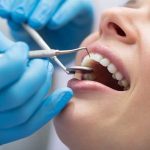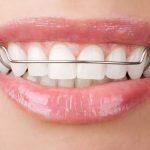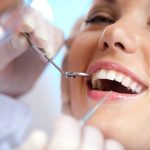Shifted Teeth After Braces? Here’s How to Fix Them
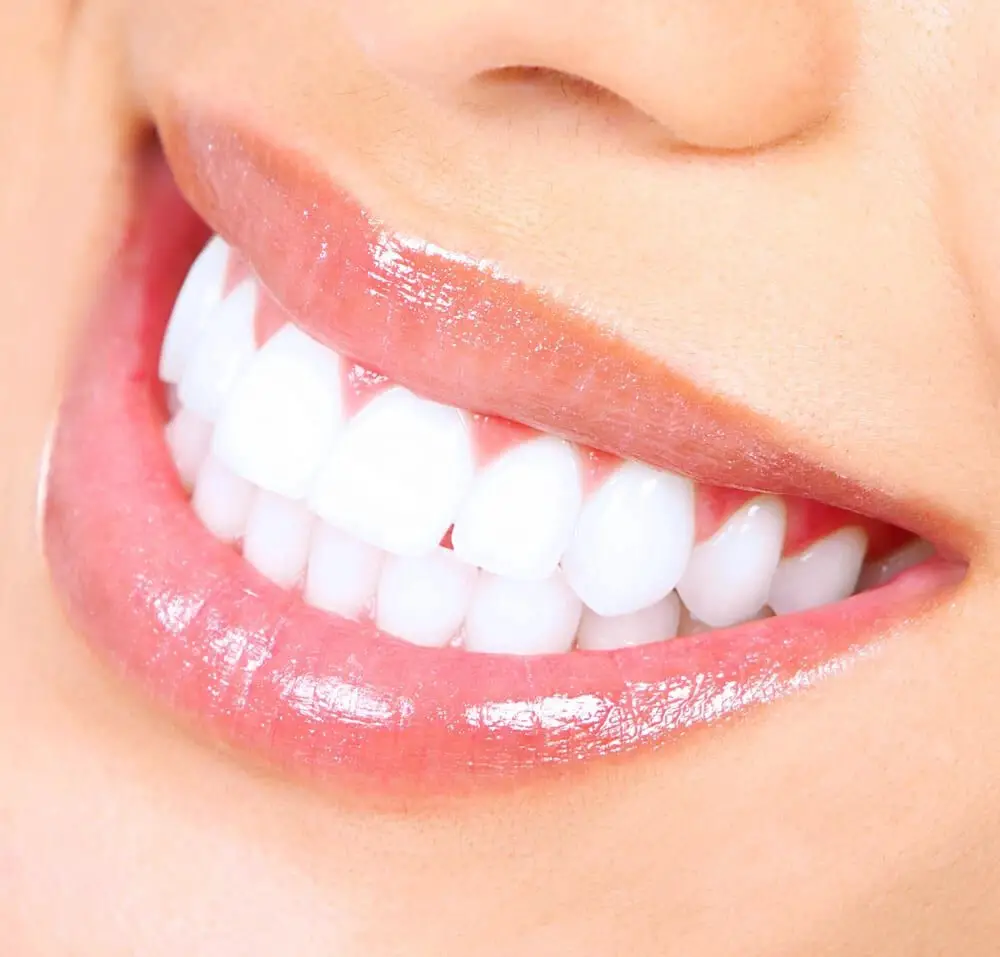
Having a beautiful and aligned set of teeth is a dream for everyone. While braces are the most common treatment to straighten teeth, some individuals may face shifted teeth even after the treatment. This is not only frustrating but can also lead to various dental problems in the future. If you’re one of the many people who have experienced shifted teeth after braces, don’t worry, as there are numerous ways to fix them. Shifted teeth after braces can be caused by various factors, such as improper retainer use, lack of follow-up appointments, or not wearing the retainer for the recommended amount of time. Fortunately, with the advancements in modern dentistry, there are several solutions to fix this issue. Whether you’re dealing with minor or severe teeth shifting, there are numerous treatment options available to help you achieve that perfect smile you’ve always wanted. In this article, we’ll explore some of the most effective ways to fix shifted teeth after braces.
After months or even years of wearing braces, it can be frustrating to notice that your teeth have shifted back to their former position. This is not uncommon, as teeth have a natural tendency to move over time. The forces of chewing, tongue pressure, and the natural aging process can all contribute to the shifting of teeth. Additionally, if proper retainer wear is not maintained after braces, the teeth can begin to shift back towards their original placement. Fortunately, there are several options available to fix shifted teeth, including clear aligners, traditional braces, and retainers. It is important to consult with your orthodontist to determine the best course of action for your individual needs.
Shifted teeth after braces can lead to various dental problems such as tooth decay, gum disease, and even jaw pain. Addressing shifted teeth is crucial to ensure proper dental function and aesthetics. Misaligned teeth can cause difficulty in biting and chewing, leading to digestive problems. Moreover, they can also affect speech and cause self-consciousness. Addressing the issue of shifted teeth can prevent further dental complications and improve self-esteem. Seeking professional help from a dentist or orthodontist can provide suitable treatment options such as braces, retainers, or clear aligners, which can help shift teeth to their proper position and restore dental health and confidence.
Causes of Shifted Teeth
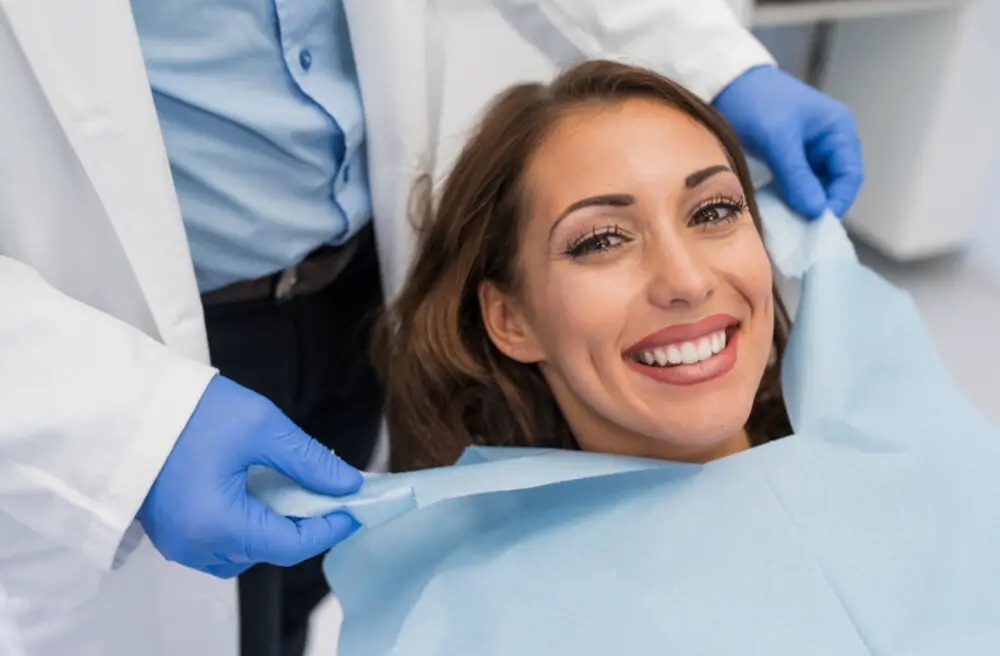
Shifted teeth after braces can be frustrating and discouraging, especially since many people invest significant time and money into orthodontic treatment. However, there are several reasons why teeth can shift even after braces, and understanding these causes can help individuals take steps to prevent or correct the problem. One of the most common causes of shifted teeth is failing to wear a retainer as directed after braces are removed. A retainer is a custom-made device that helps hold teeth in place after orthodontic treatment. Without a retainer, teeth can shift back to their previous positions, even if they were straightened with braces. Other causes of shifted teeth include genetics, mouth breathing, and improper oral hygiene. Genetics plays a significant role in the alignment of teeth, and some individuals may be more prone to shifts or crowding even after orthodontic treatment. Mouth breathing can also cause teeth to shift, as it can dry out the mouth and cause the tongue to rest in an unnatural position, putting pressure on teeth. Poor oral hygiene can also lead to tooth shifting, as gum disease and tooth decay can weaken the supporting structures of teeth, causing them to move or become loose. By understanding these causes of shifted teeth, individuals can take steps to prevent or address the problem and maintain a healthy, straight smile.
One of the common reasons for shifted teeth after braces is the lack of retainer use. Retainers are orthodontic devices that help to maintain the position of teeth after the braces are removed. They are typically custom-made for each individual and should be worn as directed by the orthodontist. However, some individuals fail to wear their retainers as recommended, which can lead to teeth shifting back to their original position. It’s important to follow the orthodontist’s instructions and wear retainers as directed to prevent teeth from moving. In some cases, a new retainer may need to be made or additional orthodontic treatment may be necessary to fix the shifted teeth.
Genetics play a significant role in the positioning of teeth. A person’s genetic makeup determines the size and shape of their jawbone, which in turn affects the alignment of their teeth. Malocclusions, or misaligned teeth, can be inherited from one or both parents. Additionally, genetic disorders like cleft lip and palate, as well as conditions like missing or extra teeth, can also impact the alignment of teeth. While orthodontic treatment can correct many alignment issues, genetic factors may still cause teeth to shift after braces. Understanding the role of genetics in dental health can help individuals make informed decisions about their orthodontic treatment and post-treatment maintenance.
Mouth trauma refers to any injury caused to the mouth, teeth, gums, or lips. It can be caused by a variety of factors such as accidents, falls, sports injuries, or even dental procedures. Mouth trauma can result in a range of problems such as chipped or broken teeth, dislodged teeth, bleeding gums, and even nerve damage. It is important to seek immediate medical attention if you experience any form of mouth trauma as it can lead to more serious complications if left untreated. Your dentist may recommend a variety of treatments such as braces, dental implants, or even surgery depending on the severity of the injury.
Signs of Shifted Teeth
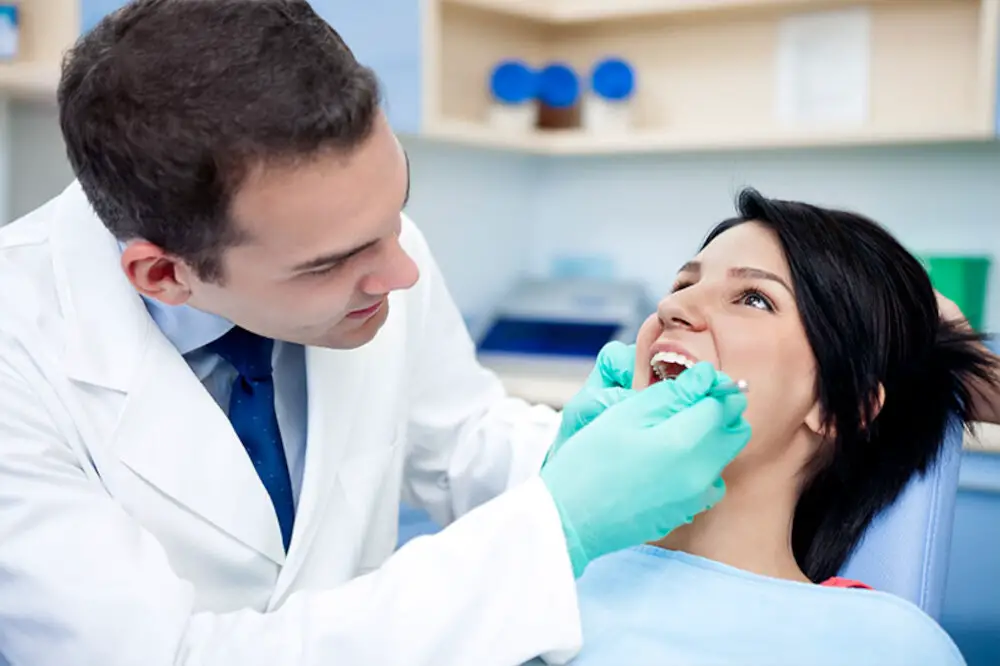
Shifted teeth are a common concern among people who have undergone orthodontic treatment in the past. Despite having braces, some individuals may experience a relapse in their teeth’s position, leading to various dental issues. There are several signs of shifted teeth that you should watch out for, including noticeable gaps between the teeth, crowding, bite problems, and jaw pain. These symptoms can cause discomfort, affect your appearance, and impact your oral health, so it’s crucial to address them promptly. One of the most apparent signs of shifted teeth is teeth that overlap, twist, or appear crooked. This condition is known as crowding and can cause plaque buildup, tooth decay, and gum disease. Another sign is noticeable gaps between the teeth, which can make it difficult to chew or speak clearly. Bite problems are also a common symptom of shifted teeth, such as an overbite, underbite, or crossbite. These issues can cause discomfort when biting or chewing and lead to jaw pain or headaches. If you experience any of these symptoms, it’s essential to consult with your orthodontist or dentist to determine the best course of treatment.
Visible gaps are a common concern among people who have had braces. After investing time and money in orthodontic treatment, it can be frustrating to notice that teeth have shifted and left gaps. These spaces can not only affect the appearance of the smile but also impact oral health, as they create areas where food can become lodged and increase the risk of cavities. Fortunately, there are several options available to fix visible gaps, such as dental bonding, veneers, or clear aligners. Consulting with a dentist or orthodontist can help determine the best solution for each individual case, and restore a confident and healthy smile.
Crowding is a common problem that occurs when there is not enough space in the mouth for teeth to properly align. This can lead to teeth overlapping or being pushed out of position, often resulting in a less-than-perfect smile. Crowding can be caused by a number of factors, including genetics, wisdom teeth, and habits like thumb-sucking. Fortunately, there are a variety of solutions available to fix crowding, such as braces, clear aligners, and in severe cases, tooth extraction. It’s important to address crowding as soon as possible to avoid further dental complications and to achieve a beautiful, healthy smile.
Bite changes can occur after the braces are removed, even if the teeth are straightened. This can be due to a variety of reasons, including genetics, age, and natural wear and tear. A misaligned bite can cause discomfort and pain, as well as other dental issues. Luckily, there are options available to fix bite changes, such as orthodontic treatment and restorative procedures. It’s important to consult with a dentist or orthodontist if you experience bite changes to determine the proper course of action. By addressing the issue promptly, you can avoid further dental problems and ensure a healthy, functional smile.
Pain or discomfort is a common occurrence when it comes to shifted teeth after braces. This is because the teeth are being moved into a new position, causing pressure and tension on the surrounding tissues. Patients may experience soreness, tenderness or even aching sensations in their teeth and gums. It is important to note that this discomfort is generally temporary and can be managed with over-the-counter pain medication or using a warm compress on the affected area. However, if the pain persists or becomes severe, it is recommended to consult with your orthodontist to rule out any complications.
Treatment Options

When it comes to treating shifted teeth after braces, there are several options available. Orthodontic treatment such as braces or clear aligners can be used to correct the misalignment. In some cases, retainers may also be used to maintain the corrected position of the teeth. The type of treatment recommended will depend on the severity of the misalignment and the individual’s specific needs. Your orthodontist will work with you to determine the best course of action. Another treatment option for shifted teeth after braces is cosmetic dentistry. This may include dental bonding, veneers, or crowns to improve the appearance of the teeth. However, it’s important to note that cosmetic dentistry does not correct the underlying misalignment of the teeth and may not be a suitable option for everyone. It’s important to consult with a qualified dental professional to determine the best treatment for your individual needs and goals. With the right treatment plan, you can restore your smile and improve your oral health.
Orthodontic treatment, which includes braces or aligners, is a highly effective method for correcting crooked, misaligned, or shifted teeth. These treatments work by gradually applying pressure to the teeth to move them into their proper position. Braces consist of metal or ceramic brackets that are attached to the teeth, which are then connected by wires and elastic bands. Aligners are made of clear plastic and are custom-fit to the patient’s teeth. Both treatments require regular adjustments to ensure the teeth are moving in the right direction. While the process can take several months to a few years, the results are long-lasting and can greatly improve the appearance and function of the teeth and jaw. If you are experiencing shifted teeth after braces, it is important to speak with your orthodontist to determine the best course of action to correct the issue.
Retainers are an essential part of orthodontic treatment after braces. They are custom-made devices that help maintain the corrected position of teeth. Retainers can be removable or fixed, depending on the patient’s preference and treatment needs. Removable retainers are made of clear plastic and are worn for a specific period, usually at night. On the other hand, fixed retainers are thin wires that are bonded to the back of the teeth and remain in place for a more extended period. Retainers help prevent teeth from shifting back to their original position, ensuring that the orthodontic treatment produces long-lasting results. It’s crucial to wear retainers as directed by the orthodontist to keep the teeth in their proper position and avoid the need for additional treatment.
Dental bonding is a cosmetic dental procedure that involves the application of a tooth-colored resin material to the teeth to improve their appearance. It is an effective solution for a variety of dental issues, including chipped or cracked teeth, gaps between teeth, and discolored teeth. During the procedure, the dentist will first etch the surface of the tooth to create a rough surface, which helps the bonding material adhere better. The resin is then applied, shaped, and hardened with a special light. The result is a natural-looking, durable restoration that can last for many years with proper care. Dental bonding can be a great option for those who want to improve the appearance of their teeth without the need for more invasive procedures.
Porcelain veneers are a popular cosmetic dental treatment that can effectively address a variety of dental issues including shifted teeth after braces. These thin, custom-made shells are designed to cover the front surface of the teeth to improve their appearance. They are made from high-quality porcelain material that mimics the natural look and feel of teeth. Porcelain veneers can be used to correct a range of dental problems, including crooked or misaligned teeth, gaps, chips, and stains. The procedure involves minimal preparation of the teeth and can be completed in just a couple of appointments. With proper care and maintenance, porcelain veneers can last for many years and can provide you with a beautiful, confident smile.
Tooth extraction is a common dental procedure used to remove a damaged or decayed tooth. It is also sometimes performed to create space for teeth that are overcrowded or misaligned. The process typically involves numbing the area around the tooth with a local anesthetic, then using specialized tools to loosen and remove the tooth. After the tooth is extracted, the dentist will provide instructions for caring for the area to promote healing and prevent infection. While tooth extraction may sound intimidating, it can often be a straightforward and relatively painless procedure that can help to improve overall dental health and prevent further complications.
Preventing Shifted Teeth
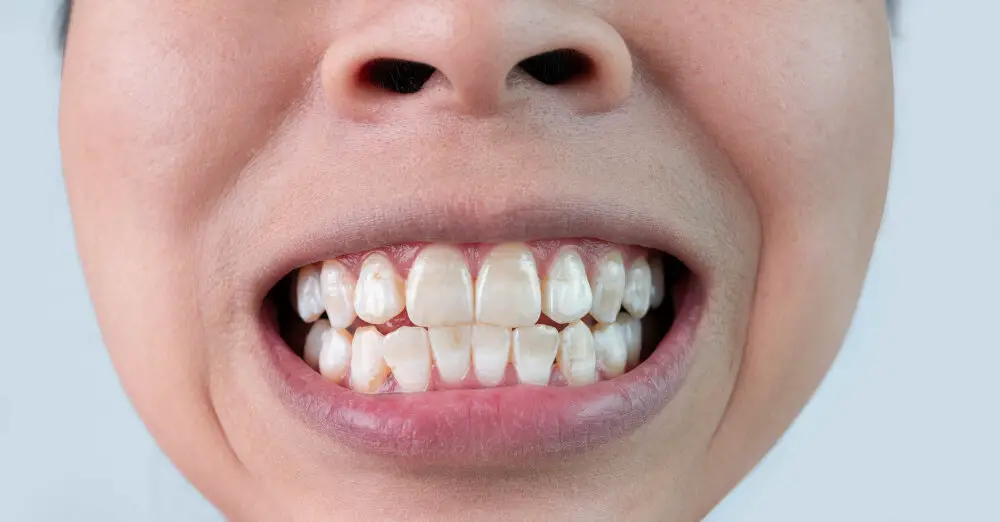
Shifted teeth after braces can be a frustrating experience. After all the hard work and investment, it can be disheartening to see your teeth shift back to their original position. However, there are steps you can take to prevent this from happening. One of the most effective ways is to wear your retainers as instructed by your orthodontist. Retainers help to keep your teeth in their new position and prevent them from shifting. It’s important to wear them consistently as instructed, even if it feels uncomfortable or inconvenient at first. Gradually, you’ll get used to wearing them, and it will become a habit. Another way to prevent shifted teeth is to maintain good oral hygiene. Brushing and flossing regularly helps to keep your teeth healthy and prevents gum disease, which can cause teeth to shift. It’s also important to avoid habits that can damage your teeth, such as chewing on ice or biting your nails. These habits can weaken your teeth and cause them to shift. By taking these steps, you can help to ensure that your teeth stay in their new position after braces and maintain a beautiful, healthy smile for years to come.
Wearing retainers as instructed is crucial to maintaining the results achieved by braces. Retainers are designed to keep your teeth in their new positions, preventing them from shifting back to their original places. It is recommended to wear retainers for at least 22 hours a day, especially during the first few months after the braces are removed. Neglecting to wear retainers as instructed can cause teeth to shift, leading to a new set of orthodontic problems that may require further treatment. In some cases, failing to wear retainers can even result in the need for braces again! Therefore, it is important to follow your orthodontist’s instructions carefully and take good care of your retainers to keep your teeth straight and healthy.
Regular dental checkups are essential for maintaining good oral health, preventing dental problems, and fixing any issues that may have arisen. After having braces, it is particularly important to keep up with these checkups to ensure that your teeth stay in their proper alignment. Your dentist can monitor any shifting that may occur and take action to prevent it from becoming a more significant problem. They can also provide guidance on how to properly care for your teeth and braces, such as brushing and flossing techniques. By staying on top of your dental checkups, you can ensure that your teeth remain healthy, straight, and beautiful for years to come.
Maintaining good oral hygiene is crucial for preventing dental problems and keeping your teeth healthy. Brushing your teeth twice a day with fluoride toothpaste and flossing daily can help remove plaque and food particles that can cause tooth decay and gum disease. It is also important to visit your dentist regularly for check-ups and cleanings to prevent or detect any issues early. Additionally, avoiding sugary and acidic foods and drinks and using mouthwash can help improve your oral health. By taking care of your teeth and gums, you can prevent dental issues and maintain a healthy, beautiful smile.
Mouth trauma can occur due to various reasons such as accidents, falls, and sports injuries, and it can cause serious damage to the teeth and gums. To avoid mouth trauma, it is essential to take preventive measures such as wearing a mouthguard during sports activities, avoiding chewing hard objects like ice and hard candies, and being cautious while walking on slippery surfaces. Additionally, regular dental checkups can help detect any potential issues and prevent them from becoming more severe. By taking these precautions, you can ensure that your teeth and gums remain healthy and free from any damage or trauma.
Shifted teeth after braces is a common problem that many people face. It is essential to address this issue as it can lead to several oral health problems such as gum disease, tooth decay, and even tooth loss. Misaligned teeth can also cause speech problems, chewing difficulties, and affect one’s self-esteem. Moreover, shifted teeth can also impact the overall facial structure and lead to jaw pain and headaches. Thus, it is crucial to seek orthodontic treatment to fix the problem and prevent further complications. The good news is that there are various treatment options available that can effectively correct shifted teeth and restore one’s beautiful smile and oral health.
When it comes to treating shifted teeth after braces, emphasis is placed on the effectiveness of the treatment options available. Patients want to ensure that the treatment they choose will provide visible and long-lasting results. Various treatment options are available depending on the severity of the shifting, including clear aligners, retainers, and braces. It is important to consult with an orthodontist to determine the best course of action for each individual case. With the right treatment plan and commitment to oral hygiene, patients can achieve a beautiful, straight smile and prevent further shifting in the future.
If you have recently completed your orthodontic treatment with braces and noticed that your teeth have shifted or moved out of place, it is important to seek professional help from your orthodontist. Ignoring or delaying treatment can lead to more severe dental problems in the future and may require more extensive and costly procedures. Your orthodontist can evaluate your situation and recommend the appropriate treatment options, which may include wearing a retainer or undergoing additional orthodontic treatment. Seeking professional help early can save you time, money, and prevent further dental complications. Don’t hesitate to contact your orthodontist if you experience any changes in your teeth after braces.
Conclusion
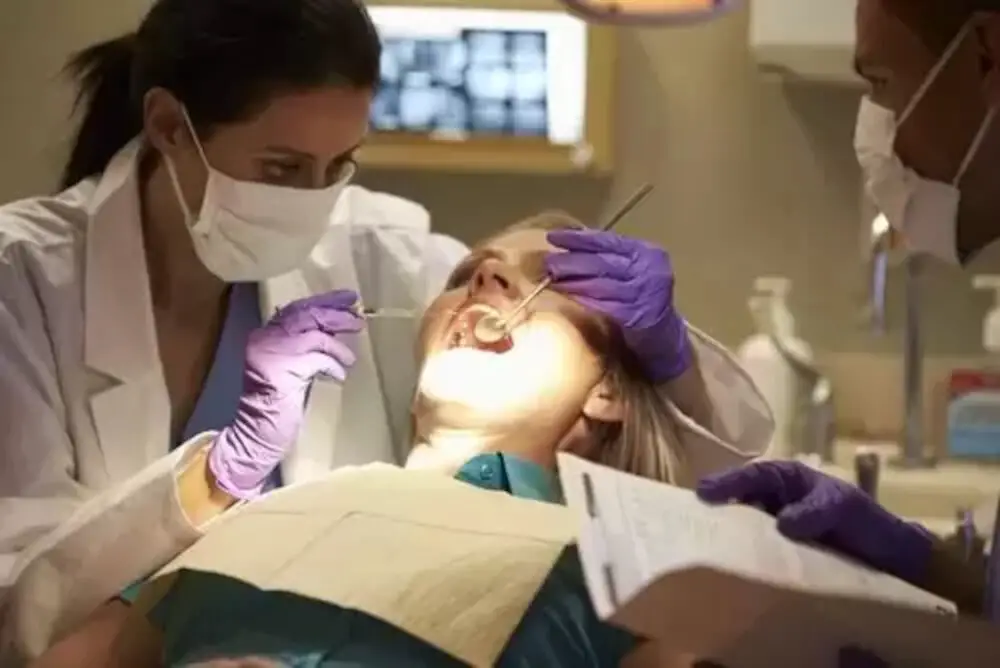
In conclusion, shifted teeth after braces can be a frustrating and disheartening experience. However, it is important to remember that it is not uncommon and can be fixed through various methods such as retainers, clear aligners, or even further orthodontic treatment. It is crucial to consult with a qualified orthodontist who can assess your individual situation and recommend the best course of action. With patience and persistence, achieving a beautiful and healthy smile is possible. Don’t let shifted teeth hold you back from feeling confident and happy in your appearance. Take action and seek the proper treatment to achieve the smile you deserve.
